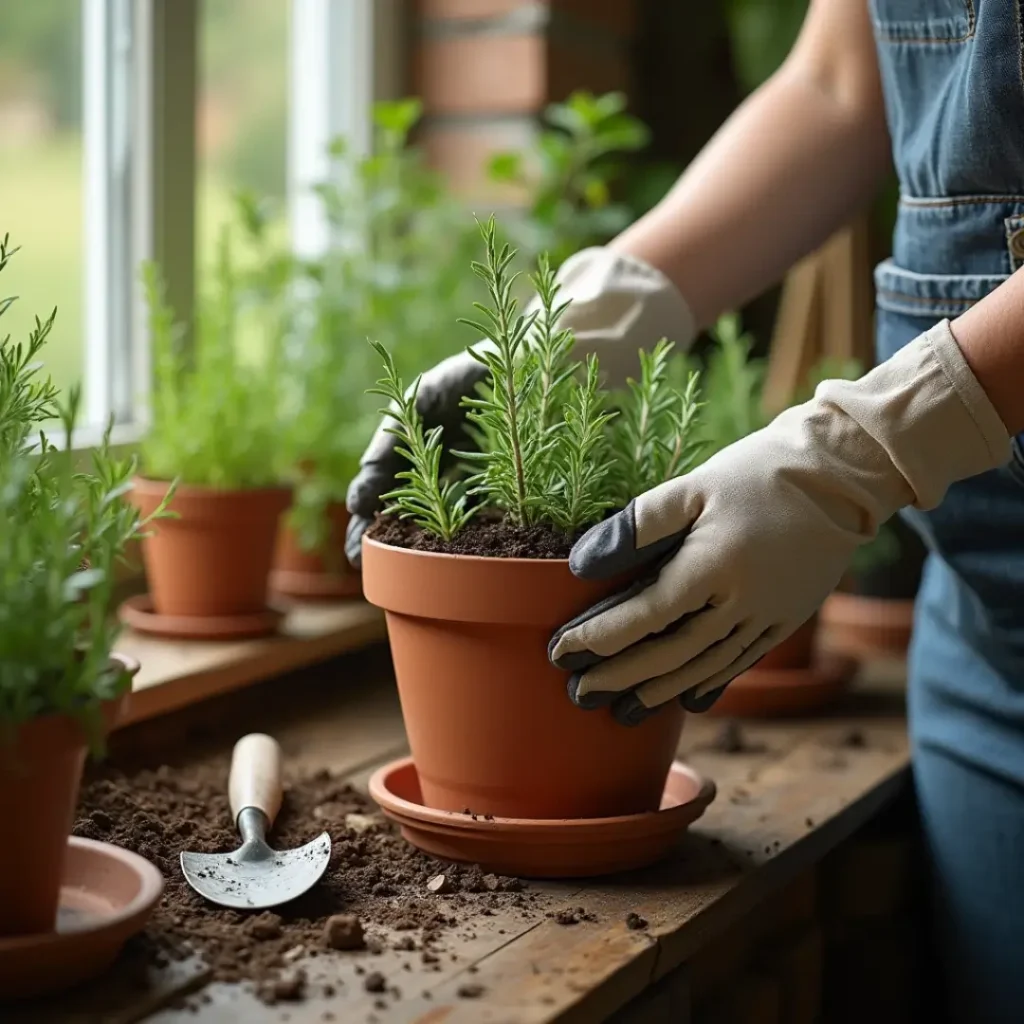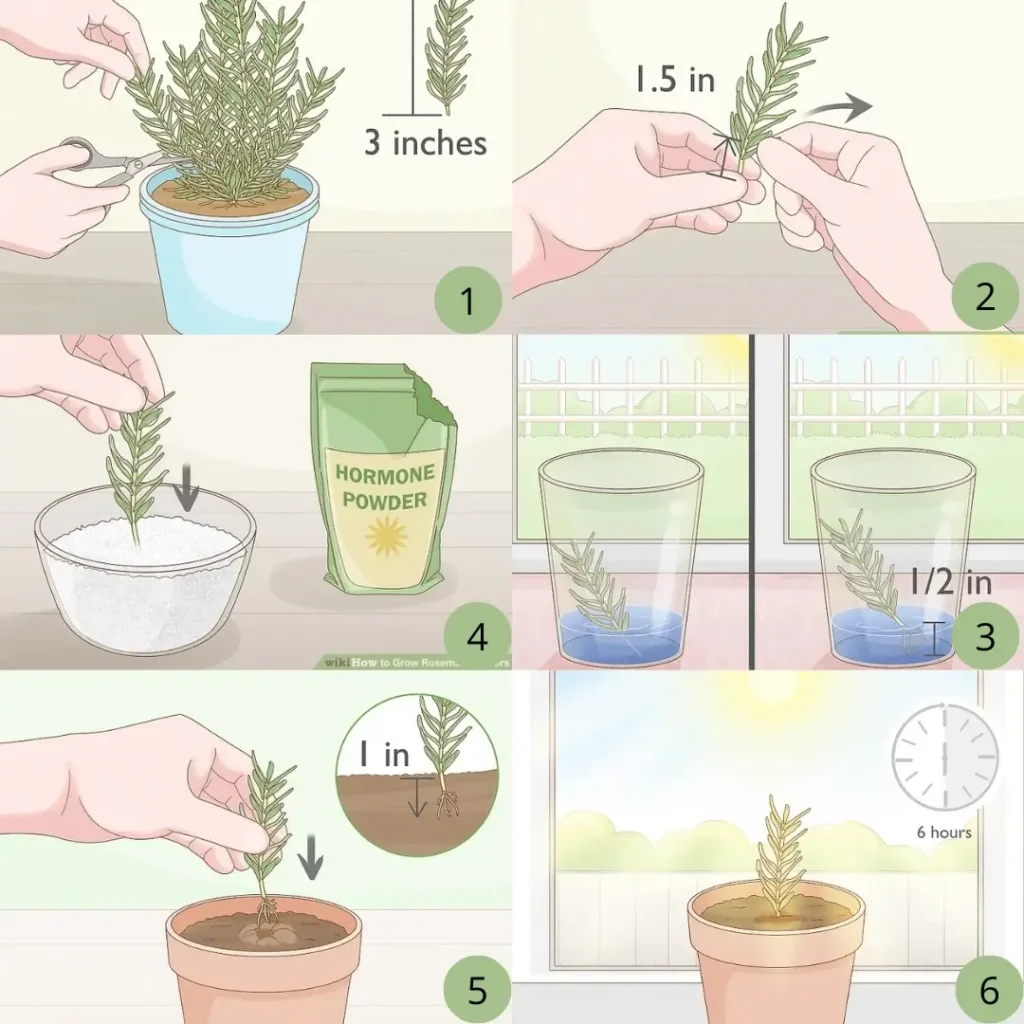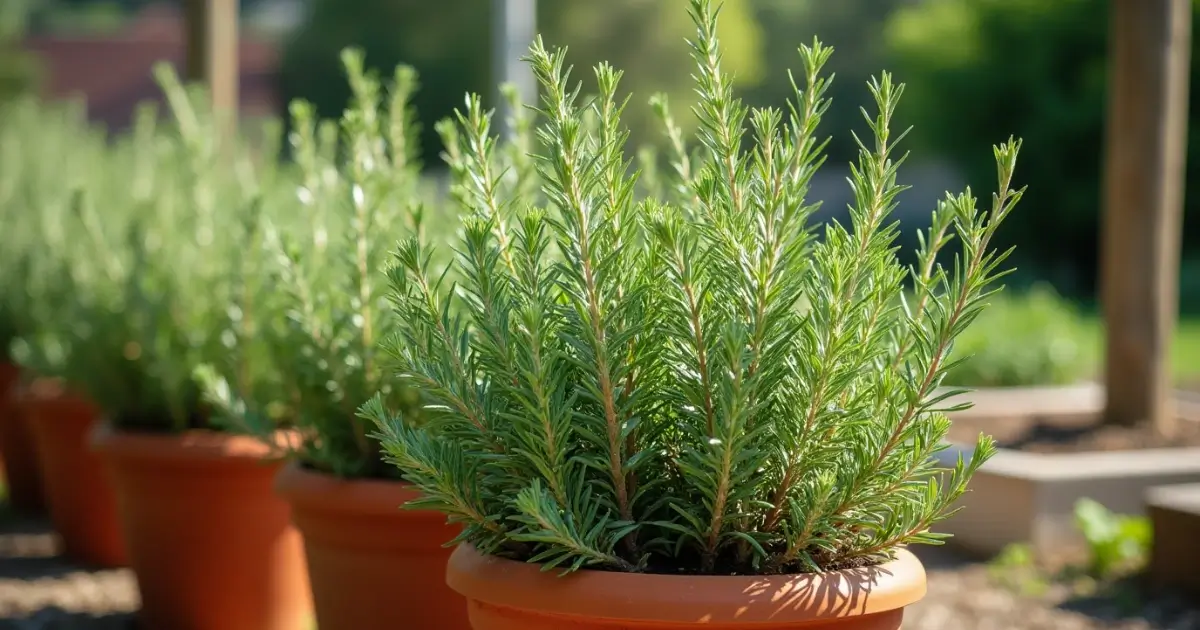8 Powerful Steps to Grow Rosemary Plants Successfully at Home
1. Introduction :
Rosemary is one of those rare herbs that checks every box: it’s beautiful, fragrant, edible, and surprisingly easy to care for. Whether you’re growing it for its culinary uses, its pest-repelling properties, or simply for the pleasure of having fresh greenery year-round, rosemary is a must-have in any home garden. With the right setup, even a small container by a sunny window can yield a thriving rosemary plant that lasts for years.
In this complete guide, you’ll discover exactly how to grow rosemary plants from scratch—whether you’re working with a sunny windowsill, balcony pots, raised garden beds, or a backyard herb patch. No matter your experience level or space, this step-by-step approach is designed to help you grow rosemary plants confidently and successfully at home. We’ll cover everything from choosing the right variety and planting it properly, to propagating new plants from cuttings, maintaining healthy growth with the right care routine, and harvesting fresh sprigs for cooking or storage. By the end, you’ll have all the practical knowledge you need to grow rosemary plants that are not only lush and vibrant but also productive year-round.
Table of Contents
2. Understanding the Basics :
Rosemary (Rosmarinus officinalis) is a Mediterranean herb known for its fragrant, needle-like leaves. It prefers warm, dry climates and is both drought-tolerant and pest-resistant. There are two main types of rosemary:
- Upright varieties like ‘Tuscan Blue’ or ‘Arp’, which grow vertically and are great for hedges.
- Trailing varieties like ‘Prostratus’, which spill over edges and are perfect for containers.
Whether you’re planting rosemary for its culinary value or as a decorative garden element, understanding these basics helps you choose the right rosemary to plant for your environment.

3. Choosing the Right Plants :
When selecting rosemary to plant, consider your climate and garden space. Cold-hardy varieties like ‘Arp’ and ‘Hill Hardy’ withstand cooler temperatures, while ‘Tuscan Blue’ thrives in warmer zones. For indoor gardening, dwarf varieties such as ‘Blue Boy’ are compact and manageable.
You can start rosemary from seeds, cuttings, or nursery plants. Cuttings are the easiest and fastest way to grow healthy rosemary.
Tips :
- Choose healthy plants with firm stems and no signs of yellowing.
- Opt for organic or non-GMO seeds if growing from scratch.
- For beginners, starter plants from a nursery are best.
4. Planting Guide & Setup :
Step-by-Step Instructions :
- Choose a Container or Garden Spot: Rosemary needs full sun (at least 6-8 hours/day).
- Ensure Good Drainage: Use well-draining potting mix or sandy soil. Containers must have drainage holes.
- Plant Depth: Set the rosemary at the same depth it was growing in its pot.
- Water Lightly: Rosemary prefers slightly dry conditions. Water sparingly but consistently.
- Spacing: Space outdoor plants 2–3 feet apart to allow air circulation.
For indoor rosemary plant care, place the container near a sunny window or under grow lights.
Container Tip :
Clay or terracotta pots help keep roots dry and reduce the risk of root rot.

5. Essential Care & Maintenance :
Keeping your rosemary healthy comes down to simple maintenance.
Watering :
Let the soil dry out between waterings. Overwatering is a common mistake that leads to root rot.
Pruning :
Trim back 2–3 inches of the plant regularly to encourage bushier growth.
Feeding:
Fertilize once every 4–6 weeks during the growing season using a balanced, water-soluble fertilizer.
Indoor Rosemary Plant Care :
- Ensure plenty of light (supplement with grow lights if needed).
- Avoid humidity and misting.
- Rotate the pot for even growth.
6. Propagating Rosemary from Cuttings :
You can multiply your rosemary plants easily from just one healthy mother plant. This method is inexpensive and ideal for gardening from home.
Steps to Propagate:
- Cut a 4–6 inch stem from a healthy rosemary plant just below a leaf node.
- Strip the lower leaves off the bottom 2 inches of the cutting.
- Dip the cut end in rooting hormone (optional but helpful).
- Place the cutting in a small pot filled with moist, well-draining soil or a mix of perlite and peat moss.
- Keep the pot in a warm spot with indirect light.
- Mist lightly every few days to keep humidity up but avoid soggy conditions.
Roots typically begin to form in 2–4 weeks. Once the plant shows new growth, it can be transplanted to a larger pot or the garden.
Image Prompt (Krea): Step-by-step visual of rosemary propagation showing cutting preparation, planting in soil, and early root development on a bright indoor counter.

7. Common Problems & Solutions :
Despite its hardy nature, rosemary can experience some common issues:
| Problem | Cause | Solution |
|---|---|---|
| Yellow leaves | Overwatering | Let soil dry, reduce watering frequency |
| Powdery mildew | Poor airflow | Space plants better, prune inner branches |
| Leggy growth | Not enough light | Move to sunnier location or add grow lights |
| Drooping leaves | Root rot | Repot in fresh, dry soil with better drainage |
| Pest infestation | Spider mites or aphids | Spray with neem oil or insecticidal soap |
Image Prompt (Krea): Side-by-side visuals of a healthy rosemary plant and one with yellowing, drooping leaves in a garden setting.
8. Harvesting & Maximizing Your Garden’s Potential :
How to Harvest:
- Use sharp scissors or garden shears.
- Cut stems 4–6 inches long from the top.
- Avoid cutting more than ⅓ of the plant at once.
When to Harvest:
Harvest in the morning after dew has dried but before the day’s heat.
Storage:
- Fresh: Wrap in damp paper towel and refrigerate.
- Dried: Hang upside down in a dark, dry place for 10–14 days.
Uses:
Add rosemary to soups, meats, vegetables, or even as a natural air freshener.
Image Prompt (Krea): A hand cutting fresh rosemary with scissors, with harvested sprigs tied in bundles for drying on a rustic kitchen counter.
9. Final Thoughts & Call to Action :
Growing rosemary is simple and satisfying. Whether you’re gardening from home on a balcony or maintaining a backyard herb bed, rosemary offers beauty, flavor, and function. Start small with one container, follow the rosemary plant care basics, and you’ll be harvesting flavorful herbs in no time.
Call to Action: Ready to grow your own rosemary? Grab a pot, some soil, and get started today. Share your progress with us in the comments!
Image Prompt (Krea): A cozy balcony or patio garden with rosemary growing in a pot, a gardener’s journal and a cup of herbal tea beside it.
10. Conclusion
Learning to grow rosemary plants is more than just adding greenery to your home—it’s an invitation to connect with nature, bring flavor to your kitchen, and enjoy the daily rhythm of nurturing something living. Whether you’re an experienced gardener or just starting out with a pot and some soil, rosemary is one of the easiest and most rewarding herbs to grow.
From its fragrant leaves to its resilience in both pots and garden beds, rosemary is a true staple in any herb garden. With minimal effort and consistent care, you can grow rosemary plants that thrive year-round, even indoors. And once established, your rosemary plant will not only give back through harvests but also through its beauty, aroma, and the satisfaction of growing your own food from home.
So don’t overthink it. Pick a sunny spot, start with one small plant or cutting, and let your gardening journey begin. You’ll be surprised at how simple it is to grow rosemary plants that bring joy and utility to your life, one sprig at a time.
🌿 Now it’s your turn — get your hands in the soil, grow rosemary plants from home, and share your progress with the gardening community. Your journey toward a thriving herb garden starts with just one stem.
11. FaQs :
1. How often should I water my rosemary plant ?
Water your rosemary only when the top inch of soil is dry. Rosemary prefers dry conditions and is sensitive to overwatering.
2. Can I grow rosemary indoors all year round ?
Yes, you can grow rosemary indoors year-round if it gets enough sunlight. Place it near a sunny window or use grow lights to keep it healthy.
3. What type of soil is best for rosemary ?
Rosemary needs well-draining soil. A sandy or gritty mix works best. Avoid heavy, moisture-retentive soils that cause root rot.
4. How do I prune rosemary to keep it bushy ?
Trim 2–3 inches from the top regularly during the growing season. Always cut above a leaf node to promote fuller growth.
5. When should I harvest rosemary ?
Harvest in the morning after dew has dried but before the sun is too strong. This preserves the oils and flavor.
6. Can I grow rosemary from store-bought cuttings ?
Yes! Choose a fresh, healthy cutting and root it in water or soil following the propagation steps in this guide.
7. What should I do if my rosemary leaves turn yellow ?
Yellowing is usually a sign of overwatering or poor drainage. Let the soil dry out and improve air circulation.
8. How long does a rosemary plant live ?
With proper care, a rosemary plant can live for many years. In warmer climates, it can even grow into a woody shrub.

